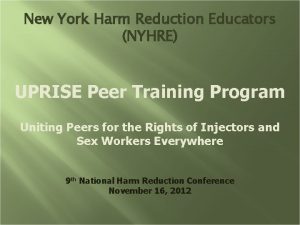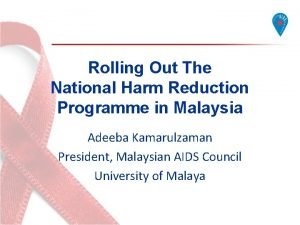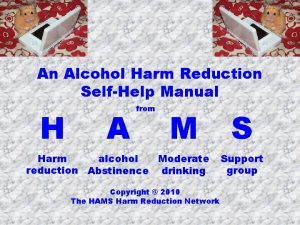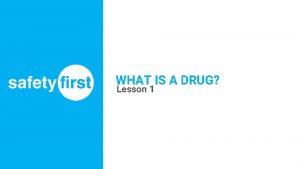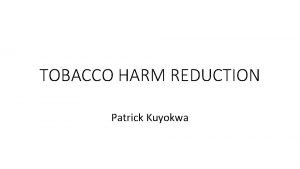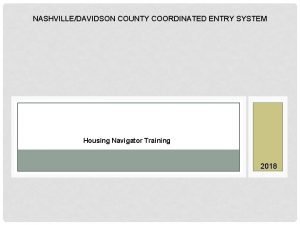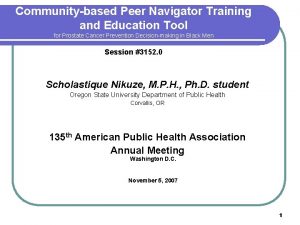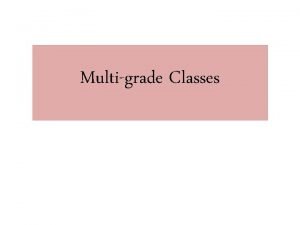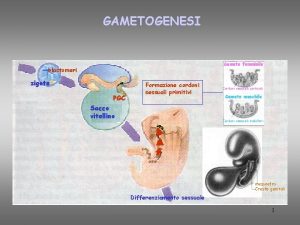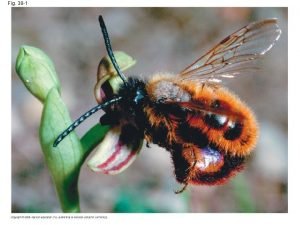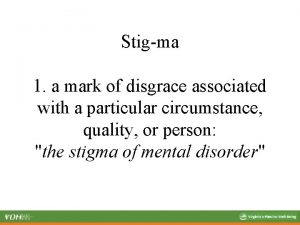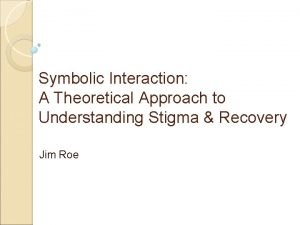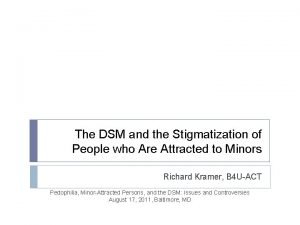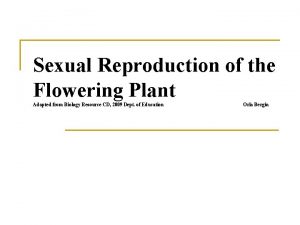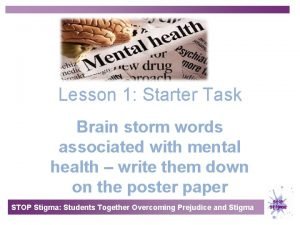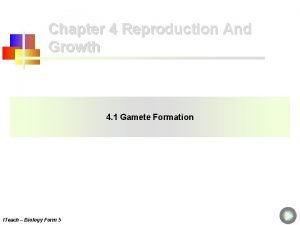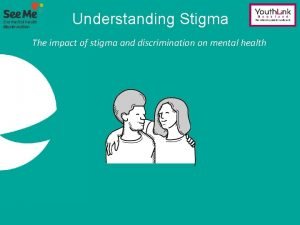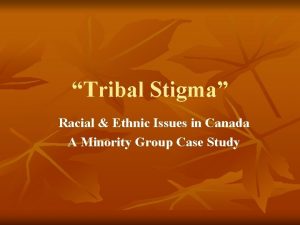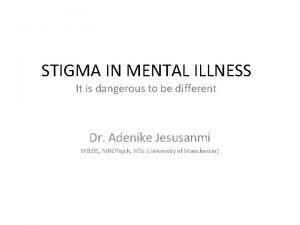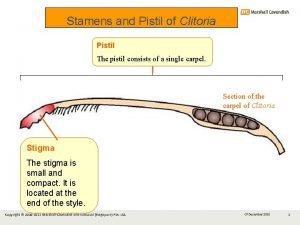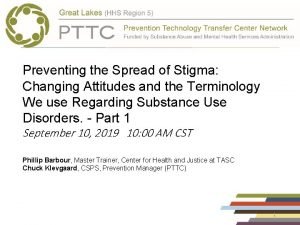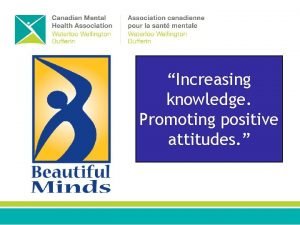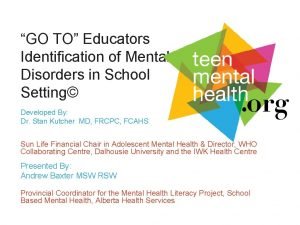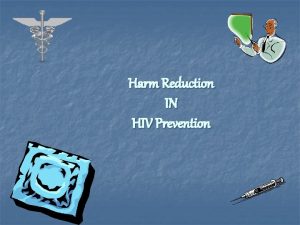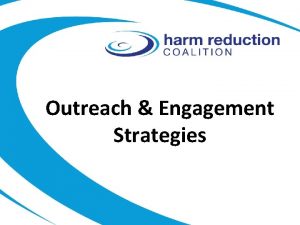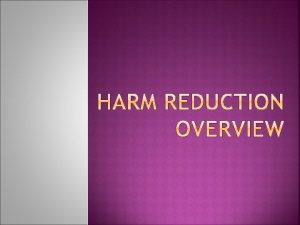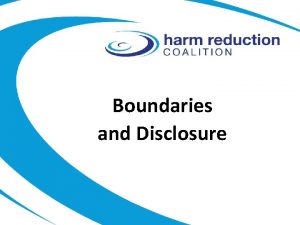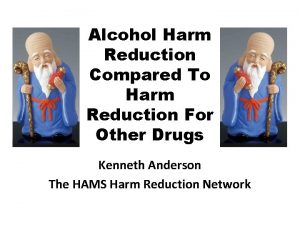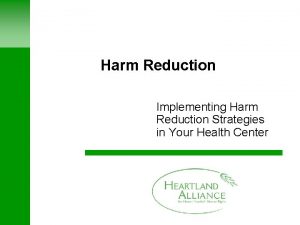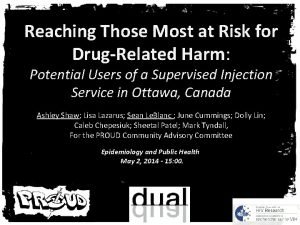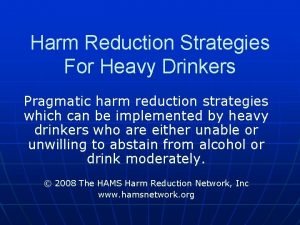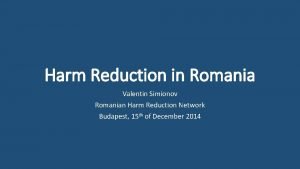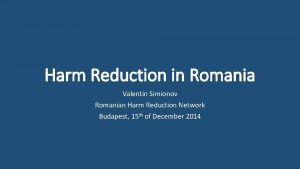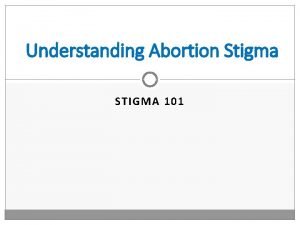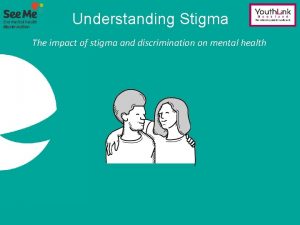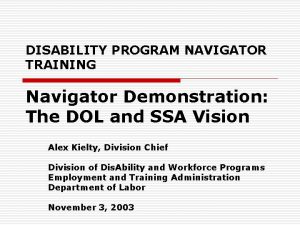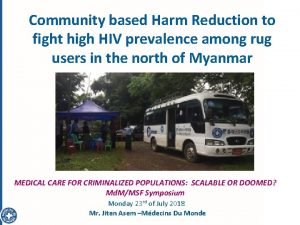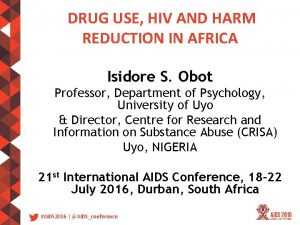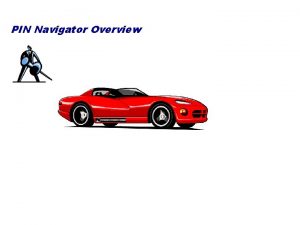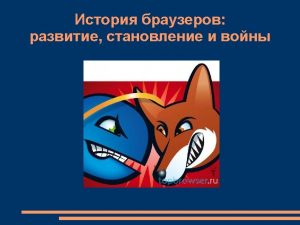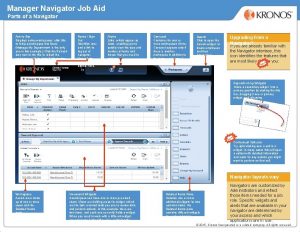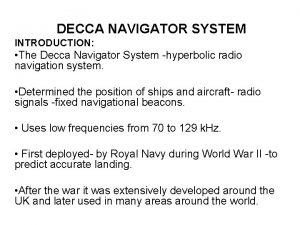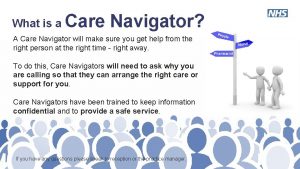Understanding DrugRelated Stigma HIV Harm Reduction Navigator Training






























- Slides: 30

Understanding Drug-Related Stigma

HIV Harm Reduction Navigator Training • Commissioned by NYC DOH National Capacity Building Program for Health Departments and CBOs who have outreach staff and peers providing prevention services for people who use drugs. • Particular focus on PWID and health care issues. • Materials are drawn from HRC’s long experience and other Harm Reduction program peer training programs. You are experts in the field no matter how long you have been doing outreach. Everyone brings relevant experiences & perspectives to this work.

1. Workshop Overview

Group Agreements • Step up, Step Back • Non-Judgment • Use “I” Statements • Agree to disagree • Confidentiality • WAIT/PUSH/ELMO

Training Objectives By the end of this session you will be able to: 1. Recall the meaning of stigma and discrimination. 2. Recognize some ways in which drug users experience stigma. 3. Discuss ideas to address stigma in context of harm reduction and providing services. 4. Identify strategies to challenge stigma in the workplace.

Agenda Understanding Drug-Related Stigma 1 Workshop Overview 2 Stigma 3 Drug-Related Stigma Break 4 Functions of Stigma 5 Creating Change: Strategies for Challenging Stigma 6 Closing & Evaluations

Glossary PWID—People Who Inject Drugs PWUD—People Who Use Drugs PLWHA—People Living with HIV/AIDS SUDs—Substance Use Disorders SAS – Syringe Access Services SEP – Syringe Exchange Program AOD – Alcohol & Other Drugs

• Sexual Orientation >> to whom we are sexually attracted • Gender Identity >> sense of self as male or female, neither or both • LGBTQI Lesbian, Gay, Bisexual, Transgender, Transsexual, Two Spirited, Questioning, Intersex

BRAINSTORM: What is Stigma?

2. Stigma A social process which can reinforce relations of power and control. Leads to status loss and discrimination for the stigmatized. Link and Phelan Conceptualizing Stigma, 2001

Stigma and Harm Reduction Accepts that stigma is a part of the world. There are ways to manage & challenge stigma. Stigma changes over time. Stigma intersects with other forms of marginalization & oppression. • When challenging stigma, meet all people where they’re at. • Acknowledges change is hard and values incremental change. • •

Stigma is the belief. Discrimination is the action.

Forms of Stigma from Individuals Institutional Stigma Self-Stigma (Internalized) Stigma through Association

ACTIVITY: Forms of Stigma Carousel

3. Drug-Related Stigma Blame and Moral Judgment Criminalize Pathologize and Patronize Fear and Isolation

Cycle of Drug-Related Stigma Internalized & Reinforced Limited Opportunities Stereotypes/ Labels Expectations/ Roles (Adapted from Julian Buchanan, Social Inclusion Unit, Glyndwr University, Wrexham)

Virtuous Cycle: Climate of Trust Positive Outcomes for Drug Users & Communities Cultural Safety Rebuilding Systematic Trust Development of Interpersonal Linkages Creating an Organizational Climate of Trust Dr. Bernie Pauly, 2013

DISCUSSION: Language and Labels

Language and Labels Gender/ Sexual Orientation Race/ Ethnicity Health Status Appearance and Stability “Drug User” How often? Which drugs? Prescribed or street? How are the drugs consumed? Choosing to abstain?

Discussion: Language, Labels, Attitudes, Behaviors • Specific language, labels, attitudes and behaviors you observed from providers that may be stigmatizing of people who use drugs? • • Ways participants may respond, react, feel… How you can respond and communicate more effectively as a provider, focusing on key elements of stigma, language, & labels.

BREAK

4. Functions of Stigma The “ 3 Ds” Difference Keep people out Danger Keep people away Discrimination Keep people down

ACTIVITY: Dynamics of Stigma

Activity: Dynamics of Stigma Purpose: To explore the different dynamics and consequences of stigma, including strategies for challenging them. Remember the 3 -Ds: • Difference (Keeping people out) • Danger (Keeping people away) • Discrimination (Keeping people down)

Round 1: Ways you/r institution may be stigmatizing drug users. Round 2: How drug users may be responding to stigmatizing behaviors? Round 3: Three strategies you can adopt as a provider at your institution to challenge/confront stigma. Designate one person to report back to the larger group for discussion and to share ideas.

5. Creating Change

Strategies for Challenging Stigma

Reflective Practice: Stigma Identify What role do you play in reinforcing stigma? What are some assumptions you make about drug use and PWUD? Explain Ask someone at your agency to describe how stigma can increase risk behaviors; how stigma can impact trust and participants’ willingness to access services. Apply Think of ways to challenge stigma in your work at the individual level with participants: language, messages, communication that fosters trust.

6. Closing & Evaluations Anonymous Surveys: Put completed surveys in the folder

HRC thanks you for participating in this workshop!
 Hams drinking
Hams drinking Nyhre
Nyhre Harm reduction programme
Harm reduction programme Harm reduction worksheets
Harm reduction worksheets Harm reduction strategies
Harm reduction strategies Harm reduction
Harm reduction Housing navigator training
Housing navigator training Peer navigator training
Peer navigator training Parts of a leaf
Parts of a leaf Stigma associated with failure and repetition is removed
Stigma associated with failure and repetition is removed Follicolo preantrale
Follicolo preantrale 38
38 Chi xi stigma
Chi xi stigma Stigma image
Stigma image Associatief stigma
Associatief stigma Inc
Inc Symbolic stigma
Symbolic stigma Stigma image
Stigma image Stamen definition
Stamen definition Stigma image
Stigma image Keratan membujur testis
Keratan membujur testis What is stigma
What is stigma Tribal stigma
Tribal stigma What is stigma
What is stigma Pistil
Pistil Formula sigma
Formula sigma Part of flower comprising stigma style and ovary
Part of flower comprising stigma style and ovary Stigma definition
Stigma definition Stigma definition
Stigma definition What is stigma
What is stigma Function of amoeba
Function of amoeba

